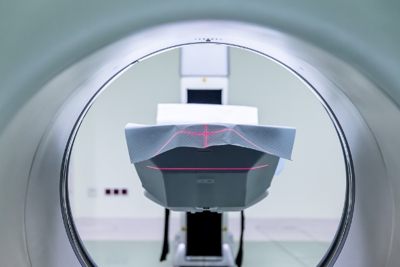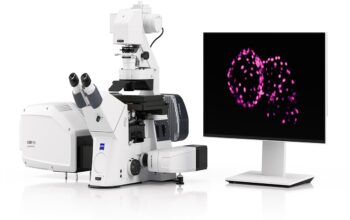Quality control is the process in which a sample of manufactured goods is tested to ensure it meets standard specifications. Quality control is essential for the medical industry as the equipment produced is meant for medicinal purposes. An error in the manufacturing process of any product, not just medical, could lead to severe ramifications as it will not work as intended.
There are numerous quality assurance programs, including the World Health Organization, national individual countries systems, and various non-governmental organizations that work to implement and improve quality control.
Medical devices are mostly used in the diagnosis, treatment, and rehabilitation following injury or disease. This equipment needs to be error-free as a misdiagnosis or improper rehabilitation might cause worsening of the injury/disease or death.
In the manufacturing of medical devices, the most advanced metrology solutions are put in place as quality control for medical dives parts is very high. Dimension metrology parts, together with various software, create different types of systems. These systems vary in both modes of usage and complexity.
This article will define quality control in the medical industry, state its importance, outline how to have quality control in the medical industry, and also look at the role and importance of metrology in the medical industry-including the manufacturing of medical devices through metrology.
Quality Control in the Medical Industry
The role of quality control in the medical industry is to improve the quality improvement methods and effectiveness of treatment and customer satisfaction with the service. It also ensures the following of the best practices within a healthcare organization. With a rapidly increasing population and medical cost, quality control in the industry is gaining more attention.
Quality control in the medical sector is focused on the needs of the patients as the industry is meant for the fulfillment of their requirements and is the judge of the effectiveness and quality of services offered.
With the increasing discovery and emergence of diseases, patients’ needs change over time. Their satisfaction and effective treatment of conditions must be closely monitored. Monitoring is both subjective and objective as the quality of medical tests performed and the patient’s opinion of the effectiveness of treatment judge the quality of treatment.
Procedures of Quality Control in the Medical Industry
Medical organizations have systematic and developed quality control procedures to ensure they reach set standards and ensure they perform satisfactorily.
1. Establishment of Standards
In order or a quality control system to be fully effective, it must have detailed information on what to monitor and an understanding of the set standards. This aids in the establishment of a scoring system to accurately measure whether the level of quality improvement efforts is reached.
The establishment of standards begins with a clear vision of what the ideal service should look like. Standards are then set to correspond with the areas of focus, and the set standards are used to monitor compliance.
2. Ensuring Monitoring Compliance
In the medical field, the purpose of quality control procedures is to monitor services by performing audits. Audits are performed on documents like patients’ medical files and the quality of processes involved in serving the patients, like how long it takes them to receive appointments when referred.
Audits are performed through a quantitative approach to capture data that is then compiled into statistics. Auditing tools used may be primary or comprehensive, depending on the level of detail to be reviewed. The areas being reviewed receive a score used to depict whether the audited variable has met the required standards or not.
3. Process Improvement
When certain areas of a medical field don’t reach the targeted standards, process improvement projects are initiated. The role of process improvement projects is to allow departments in healthcare to improve their efficiency and effectiveness.
Process improvement projects are vital in the quality control procedures as they give healthcare organizations a chance to correct deficiencies to improve the quality of service and ensure patients’ safety and satisfaction.
Importance of Quality Control in the Medical Industry
1. Assurance of Patient’s Satisfaction
Nowadays, patients are aware of their rights when it comes to medical services. A patient will opt to go to a healthcare institution that has good reviews because he/she wants the best service.
The number of health care institutions has significantly increased over the years; hence competition among the players in the field has also increased. In order to compete effectively, healthcare organizations ensure they deliver better services than their competitors in order to get more patients. Also, patient satisfaction reflects the right image of the healthcare facility or organization.
2. For Proper Reimbursement
Hospitals are ranked according to patient outcomes. With these statistics, patients choose the best healthcare providers for their specific diagnoses or conditions. Physicians also tend to select top-notch hospitals over those with poor reviews.
Reimbursement depends on the outcome. By use of value-based outcomes, insurers base reimbursements upon findings. Under the pay-per-performance in the affordable care act, hospitals with more readmissions may receive lower compensation for specific procedures than those with better outcomes for patients with the same conditions and severity of the disease.
3. Ensuring Accountability of Health Organizations and Practitioners
Duties and expectations are placed on healthcare practitioners and organizations to ensure they provide clinical excellence. The responsibilities of these individuals and organizations are then stated to create clear obligations to manage and prevent poor performance.
These duties and expectations cause healthcare providers to continuously strive to develop professionally and to optimize the process of care.

Ways to have Quality Control in the Medical Industry
Health care professionals and organizations may fail patients if relevant quality control systems are not put in place to ensure they perform as is required of them. To create an efficient, healthy, and safe workplace, administrators examine all aspects of their organization and put in place control quality measures that are most effective in those areas. Some of the most efficient ways to improve quality control in healthcare facilities include the following:
1. Performing Regular Equipment Tests
Medical equipment may get damaged due to improper use or miscalibrated during usage. Improper use and miscalibration are dangerous as they may lead to misdiagnosis of patients’ condition, which will lead to further complications. All equipment needs to be checked regularly for any damages and recalibrated to ensure accuracy.
The staff operating the equipment should also be closely monitored to ensure they handle the equipment correctly and that they follow the correct safety procedures.
2. Keeping an Inventory of Medical Equipment Spare Parts
Equipment such as life support and dialysis machines should always be kept at optimal performance conditions as damage or malfunction while in use might cost a patient’s life. An inventory of spare parts of all devices should be kept so that any broken part is replaced as soon as damage is noticed.
The healthcare organization or facility should also have staff trained on how to replace these parts as a malfunction that requires immediate attention might occur.
3. Having Experienced and Well-trained Administrator
Among the duties of administrators is to implement control systems. For the proper and smooth running of an organization, the management must have a clear understanding of control systems that are put in place and have the experience needed to enact them.
4. Maintaining a Clean and Safe Environment
A healthcare facility should always maintain optimum levels of cleanliness and safety. Proper measures should be put in place to ensure that the environment is conducive not only for the patients but also for the staff. Appropriate hazardous material collection and disposal practices should be employed as well as educating all staff on the importance of safety practices.
5. Creating Well-detailed and Concrete Processes
Medical staff and patients alike should be protected by well-organized and detailed processes of control. At times, medical personnel often have to make decisions that are not outlined in quality control specifications; there should be a system in place to ensure they don’t go against the proper merits of conduct that may violate patients’ rights or downgrade the level of service.
The Role of Metrology in the Medical Industry
Medical devices are essential in the process of treatment, and diagnosis of disease. Where measurements pertain to health, the role of metrological decisions and conformity are vital.
1. Improvement of Health and Life Expectancy
The growth of health and life expectancy of patients has been driven by constant innovations in the diagnosis and treatment of diseases and medical conditions. To ensure medication and therapies are delivered effectively, physical, biological, and chemical measurements are necessary.
The rise in chronic, neurogenerative, and cardiovascular conditions has given rise to the innovation of highly technologically advanced diagnosis and screening systems. In order to implement key healthcare regulations, robust and reliable measurements are essential. Metrology has a critical role in ensuring accurate measurements are available to diagnose, treat, and determine the best therapeutic methods, thus ensuring effective treatment of patients.
2. Facilitating the Diagnosis Process
Diagnosis is a crucial aspect of health as it explains a patient’s health problem. Diagnosis errors are harmful to patients’ health as a misdiagnosis may result in an ailment going unnoticed or cause a delay in treatment. Misdiagnosis may result in financial and physiological repercussions or even loss of life. The use of metrology minimizes this risk by producing accurate results used to diagnose a patient accurately.
3. Ensuring Faster Results
The development of highly sophisticated medical equipment has played a significant role in ensuring a more rapid diagnosis of patients. The software installed in these medical devices provides detailed reports on data collected from measurements that are then used in diagnosis.
The use of metrology in performing tests also minimizes the risk of human error that may result in a misdiagnosis. The development and innovation of dimensional metrology have played a crucial role in making this possible.
4. Facilitating Treatment
Certain conditions, such as cancer, largely depend on medical devices in their treatment. If it were not for metrology, treatment procedures such as radiation would not be possible. Metrology devices have minimized the mortality rate in many conditions that were once thought of as untreatable.

The Manufacturing of Medical Devices through Metrology
Metrology companies are consistently innovating medical devices to keep up with the ever-changing standards for manufacturing and to make their products compatible with the new manufacturing methods adopted by other manufacturers.
Manufacturing companies are also refining their hardware to work faster and tough enough to work in a shop environment. They are also tweaking software to increase automation, data analysis, and delivery of results quicker. When manufacturing any medical devices, precision is paramount. For example, in prosthetics, the metrology materials used must weigh almost like a human bone and have textured surfaces. They should also allow fast repetitive movement without wearing off.
For any medical parts to be approved, they must undergo a rigorous inspection. The increased inspection demands bring new challenges that the manufacturers must overcome for their product to be approved. Some of the challenges that come with the manufacturing of parts are:
- Magnification
- Fatigue
- Data Accuracy
- Complex Part Shapes
- Variable Data
During testing, an inspector (using an inspection program) compares the profile of the parts against a standard CAD model. Any deviation from the CAD models immediately identified by the inspection program and the part, if it does not meet set standards, is not approved. Once testing is complete, all passed parts are now ready to be implanted.
The testing of all parts and equipment follows quality control guidelines. Quality control ensures that all products produced by metallurgy getting into the market for use in medical facilities are of high quality and operate optimally.
Conclusion
The role of quality control in medicine has improved both the delivery of service, conditions in medical facilities, accountability of medical practitioners and facilities, and the quality of devices used for medicinal purposes. It is, therefore, necessary in the diagnosis, therapy, and treatment of all diseases and conditions.
Metrology plays a crucial role in the manufacture of almost all medical devices, and the innovations made in the field are making modern medicine to be one of the greatest achievements in human history.









